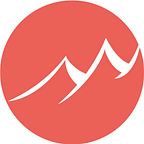Top 3 Applications of Imaging Technologies in the Insurance Industry
The insurance industry faces disruption from big data and AI; however, the direction is not clear. The gap between innovators and insurers requires business integration. Chatbots, cognition, prediction analysis, natural language processing, computer vision, and connected insurance and AI have been applied in product design, sales, underwriting, claims, customer experiences, and risk management.
We will introduce some startup companies and insurers that use video or image recognition and analysis in different insurance process sectors.
Sales
A US-based startup, Lapetus Solutions, utilizes decades of research to scan users’ facial features. From this, they identify specific covariates in the information such as body health index, biological age, and aging rate to lifespan using AI algorithms.
Cape Analytics evaluates property values and extracts structured data from high-resolution images using machine learning to improve underwriting procedures and increase accuracy. Based in California, Cape Analytics covers home insurance, commercial insurance, and reinsurance.
Chinese insurers have also adopted face recognition technology to predict a user’s age, gender, marital status, and fertility status based on facial features. This information will indicate his risk preference and enable a recommendation for an appropriate insurance package.
Denali System’s solution, InSmart, automates video inspection for the sale procedure required by the Chinese Bank and Insurance Regulatory Committee. It uses face recognition and image analysis to reduce costs and increase efficiency for insurers.
Claims
Eviid, incorporated in the UK, built a solution to use smart devices to record videos or take photos, which can be turned into reliable evidence for the claim or court use.
ZestyAI, a US startup, utilizes computer vision and deep learning to extract key building features for residential and commercial properties and accurately model the losses in either non-catastrophic or catastrophic events.
Linkface, a Chinese computer vision startup, attempts to automate claim procedures to reduce labor, claim rates, and increase insurer revenue. Linkface first categorizes pictures for claims, then evaluates damages with image recognition, and generates claim reports.
Ant Financial, an affiliate company of the Chinese Alibaba Group, collects photos in client claims and extracts information to facilitate the claims procedure. Information such as product labels or codes, damage level, claim proof, and identity (for example, via government issue ID cards), is combined with the credit records to better assist the adjuster in determining the settlement offer.
Fraud Detection
Attestiv, a US startup headquartered in Massachusetts, validates the authenticity of and detects fake videos, tampered photos, or manipulated audio files, streamlining data collection for quotes, claims, and inspections.
